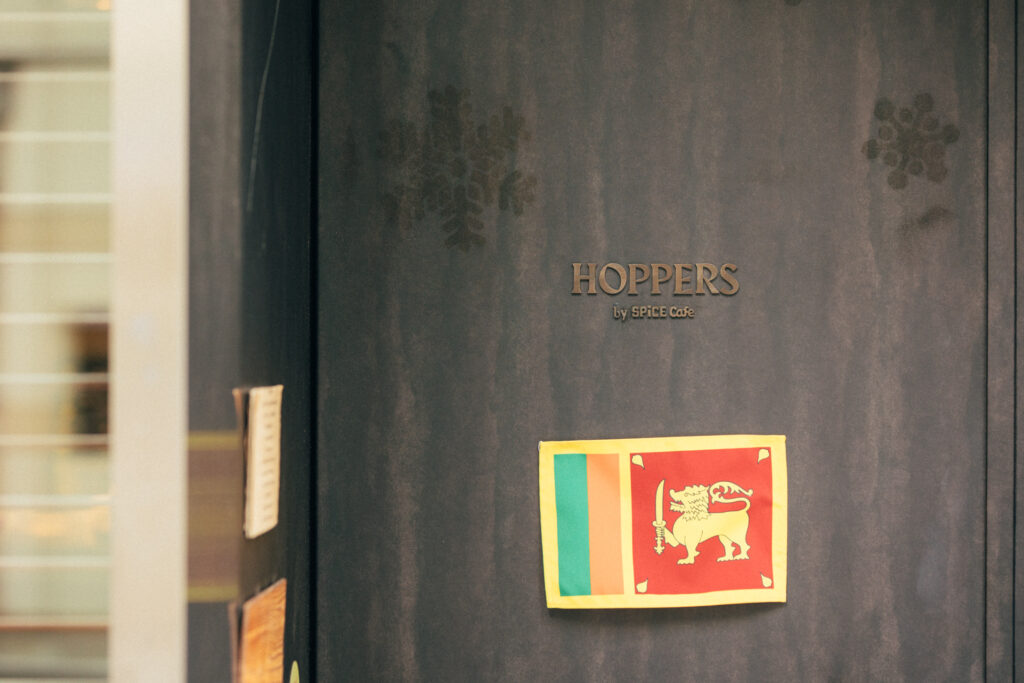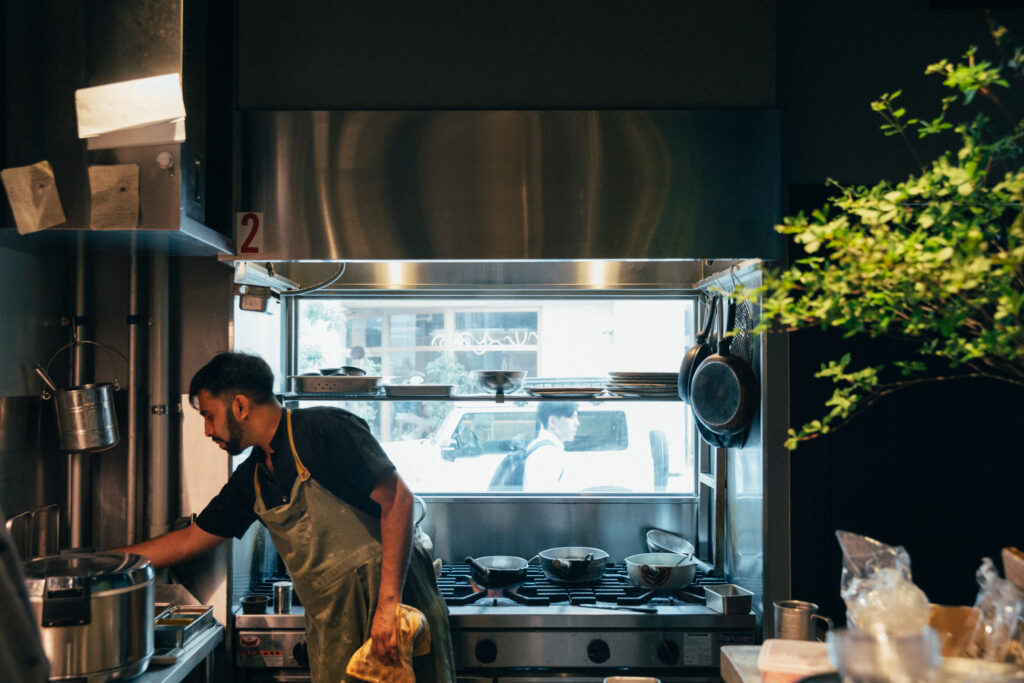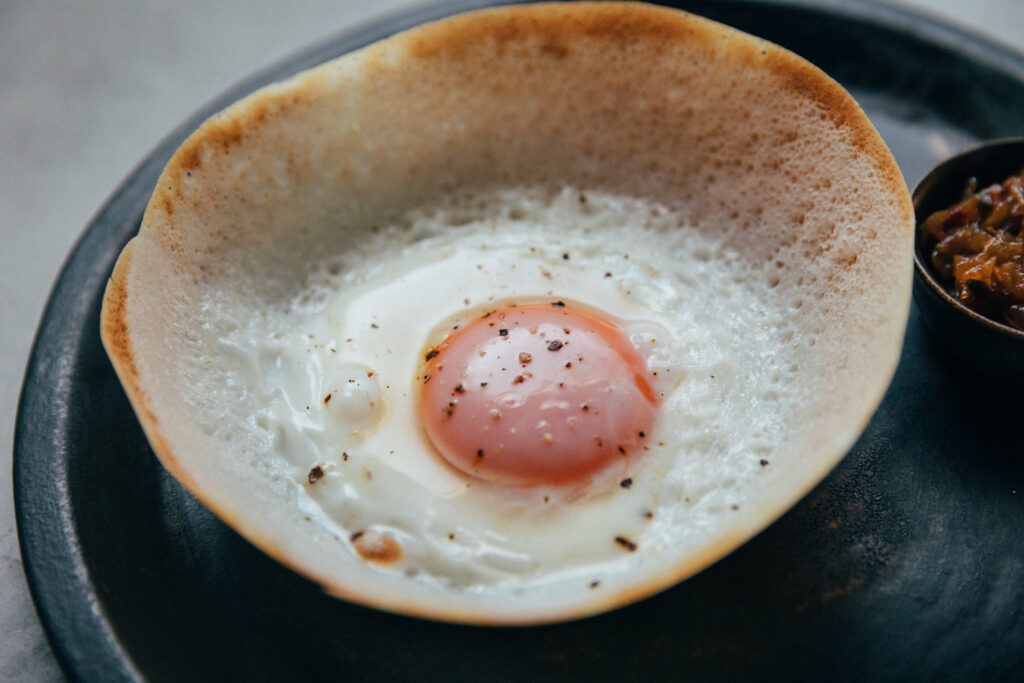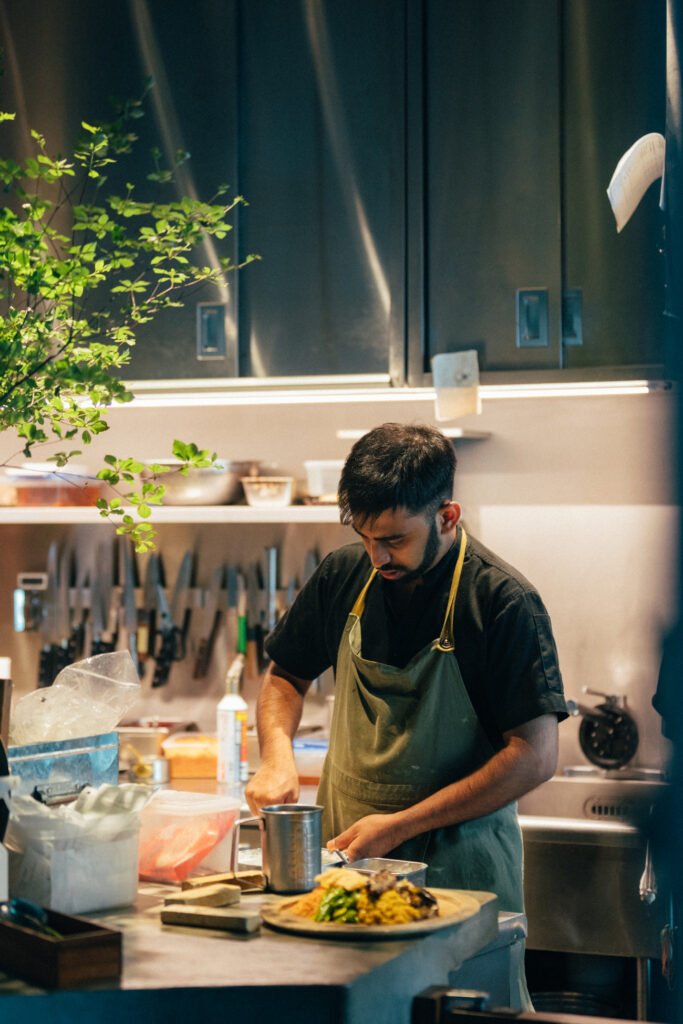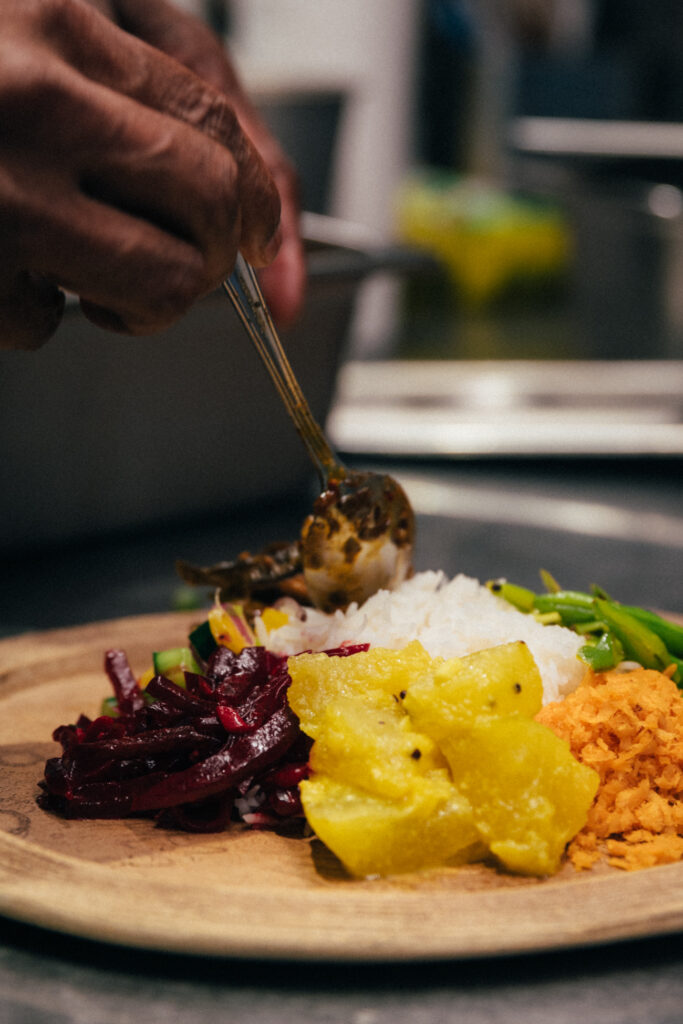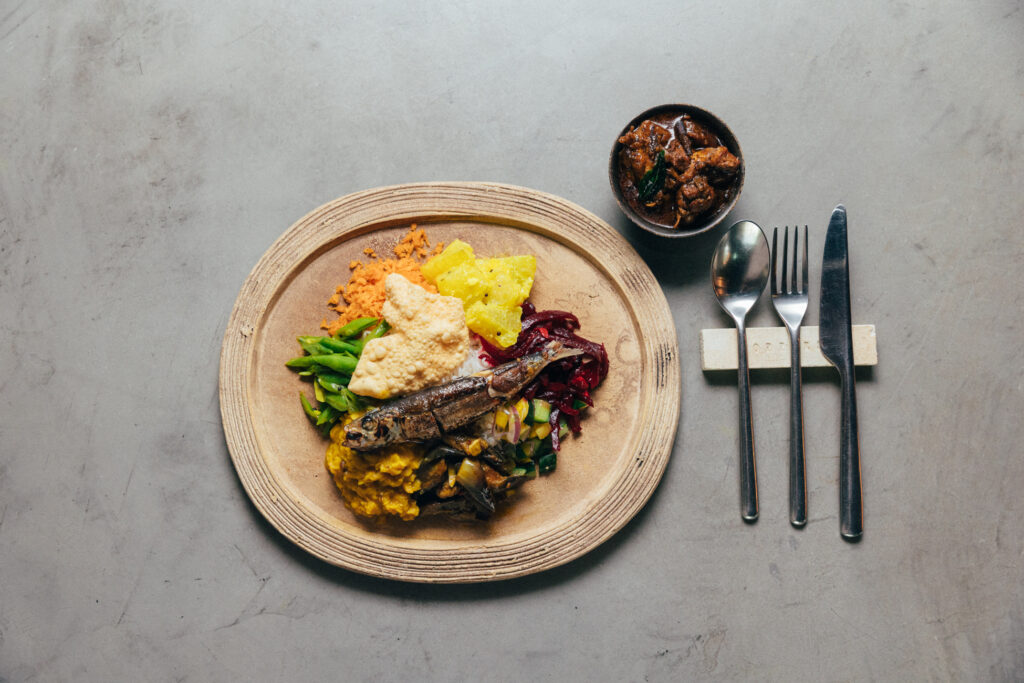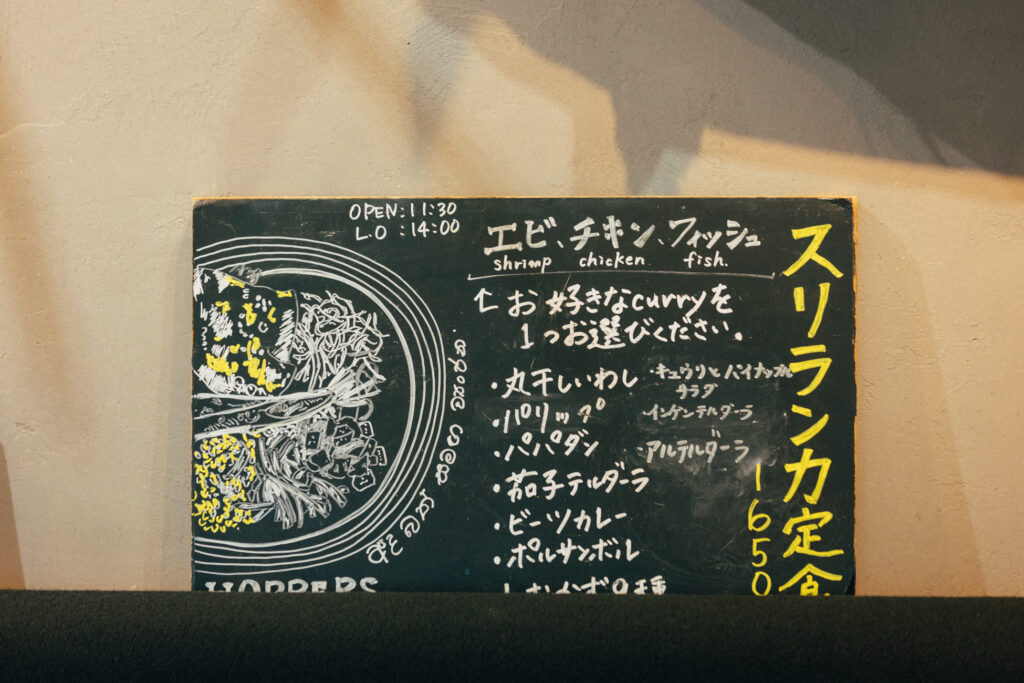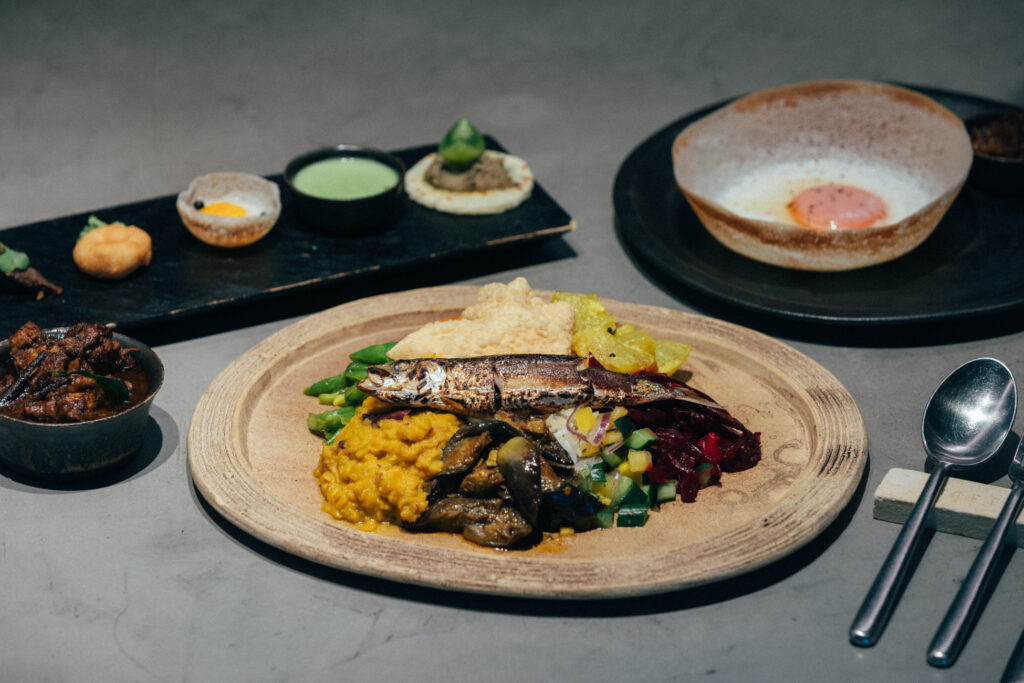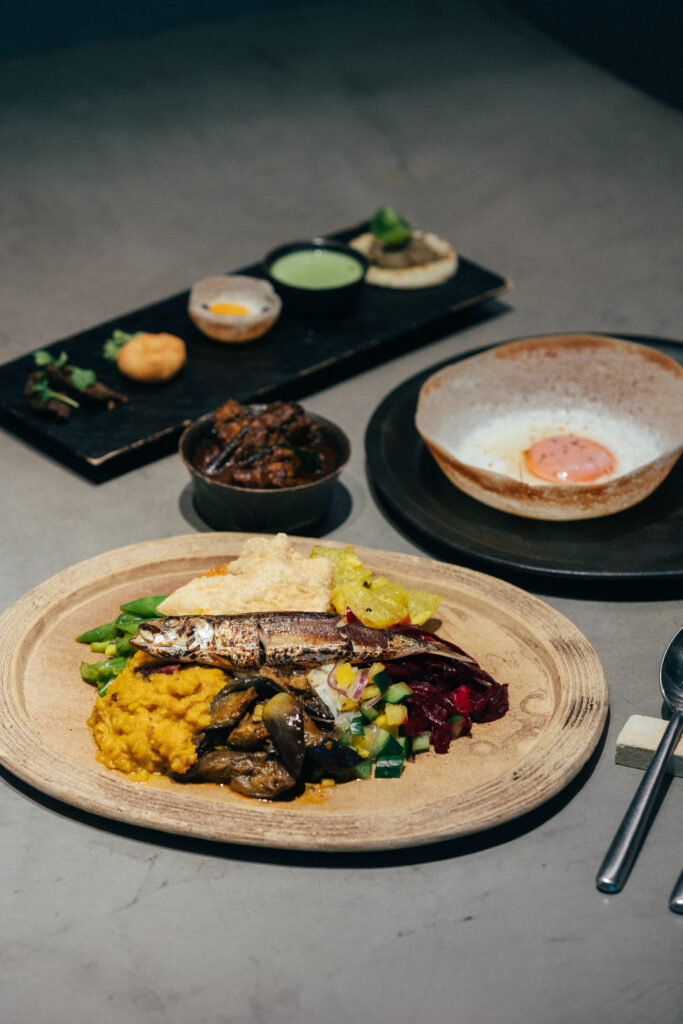


2024.09.26
HOPPERS
A journey of sensibility through food.
Immerse yourself in rare, modern, Sri Lankan cuisine.
How is a particular dish or drink created? By unraveling a restaurant’s signature you reveal the chef's personality and philosophy, their commitment to the ingredients, and even the attitude of the producers. Exploring the story behind the cuisine, the dots that shape Kabutocho turn into lines that connect them.
In the eighth installment of ‘Dialogue of Food’, we visit HOPPERS, a beautiful and colorful Sri Lankan restaurant well known for its curries, which are not only delicious but also nutritional. Come and taste the rare combination of Japanese ingredients blended with Sri Lankan culinary culture.
Kabuto One is a landmark building in Kabutocho. Just behind the Kabutocho intersection, walk through the exit directly connected to the Metro station, turn left and you will be greeted with a minimalistic and stylish storefront. The interior of HOPPERS makes for a warm atmosphere and is a pleasant contrast to the sleek concrete exterior. Once you pass through the entrance, the local language of Sri Lanka can be heard flowing from the kitchen, while the colorful dishes and sincere customer service welcome you in.
“In Sri Lanka, restaurant dining is not well developed, and so the same dishes and cuisines are loved both at home and in restaurants. The “modern Sri Lankan cuisine” served here at HOPPERS is based on local food culture, while actively incorporating ingredients unique to Japan that we source from farmers all over the country. It’s one of the few genres of its kind in the world,” owner-chef Kazushiro Ito told us. Having extensively traveled around the world, Ito was one of the first to focus on spices in Japan, introducing a variety of new flavors. Following the success of his first restaurant “Spice Cafe” in Oshiage, he is now collaborating with Sri Lankan chefs and Japanese staff to create new menu items on a daily basis at HOPPERS.
● Assorted 5 appetizers
The “Modern Sri Lankan Course” is a course meal served only at dinner. It begins with an appetizer plate that gives diners the chance to try a wide variety of Sri Lankan specialties.
The day’s lineup, from left to right, included ‘badun’, a sausage-like dish of lamb and dry-roasted spices, and ‘vada’, a non-sweet doughnut made of bean paste. Sandwiched in the middle are mini hoppers, a specialty that features a cute egg yolk at its center, followed by ‘Kola Kanda’, a Sri Lankan-style porridge. And lastly, coconut roti, a staple in Sri Lankan cuisine.
The Kola Kanda is made with Japanese Ashitaba leaves, while the roti is made with Ayu sweetfish, green tomatoes, and mint. According to Ito, Kola Kanda is “like a combination of soup and rice porridge.” The smoothness of the Ashitaba soup combined with the texture of the rice blend gently to give a nice mouthfeel. Meanwhile, the roti brings out the rich flavor of the sweetfish and is balanced by the refreshing green tomatoes and mint, making for a harmonious flavor profile.
These are dishes that are rarely seen in Japan. We hope you will enjoy each and every dish as if you were broadening your horizons on a trip.
●Hoppers
Next, we try a dish that pops out towards you. This is the national dish of Sri Lanka and the origin of the restaurant’s name. “Hoppers are a type of Sri Lankan national street food. It has a pancake-like dough made of lightly fermented rice flour and coconut milk and is characterized by its round shape formed in a deep-bottomed, bowl-like pan,” Ito explains. “In Sri Lanka, they are often sold at street corners and bus stop stalls. They can be enjoyed at any time of the day, from breakfast to a 3 o’clock snack to a light meal in the evening. It really is a widely popular snack.”
In Sri Lanka, there are plain hoppers made using only the dough. However, at this restaurant, you can enjoy egg hoppers. The sweet, savory, tropical flavor of the coconut milk perfectly matches the lightly fried egg.
Accompanying it is sambol, a common side dish in Sri Lanka. The main ingredient is onions, which give it a sweet taste, and it is sometimes served with chutney. “Recently, there have been new types of hoppers, even some that are served with chocolate. Someday, I’d like to try something different like that here at the store, or even serve take-away hoppers. I think they would be popular because they look cute. I’d love to start a hopper boom in Japan!”
●Rice and Curry
Last but not least is the Sri Lankan-style rice and curry, without which “HOPPERS” would not be complete. The local style is to serve a variety of side dishes on a bed of rice, mixing them little by little as you eat. “The best part of Sri Lankan curry is that you can enjoy the gradation of flavors, not by mixing everything at once, but by eating side dishes by themselves, or by mixing two or three as you go……. With Sri Lankan curry you can mix and match the side dishes as you like, so each person has his or her own unique taste experience,” explains Ito.
“In Sri Lanka, “rice and curry” is not the same as Japanese rice and curry. Rather it is a set meal with several side dishes served on top of the rice. Usually around four side dishes are served, but ours is a bit more luxurious, something to be enjoyed for a special day. In Sri Lanka, it’s common to have less roux and more rice, and usually, the curry is served at room temperature. It’s not served too hot because it’s an Ayurvedic country.”(*) Many of the side dishes are made from vegetables, as it’s believed that a meal containing plenty of vegetables, served at a natural temperature will help activate the stomach.
*Ayurvedic
Traditional medicine originating from India and Sri Lanka
A whole sardine placed in the middle of the plate makes a big impact. “These sardines are made from whole dried sardines purchased from a delicious dried fish shop in Japan, which are then roasted in the oven. In Sri Lanka, it’s normal to put fried foods on top of dishes, and since we have access to such great Japanese produce, we take advantage of this. This is what makes our rice and curry so unorthodox.” The side dishes are based on seasonal vegetables and are updated from time to time depending on the produce. Inspired by the seasonal ingredients available in Japan, the staff from different countries work together to develop innovative flavors.
Combining spices that have enriched the human diet since ancient times with the local food of Sri Lanka and mixing this with a variety of fresh Japanese ingredients has evolved the restaurant’s cuisine in its own unique way. The innovative cuisine experience set in a sophisticated space brings a sense of newness as if you are visiting a new place for the first time. A fresh approach to Sri Lankan cuisine that will no doubt change perspectives.
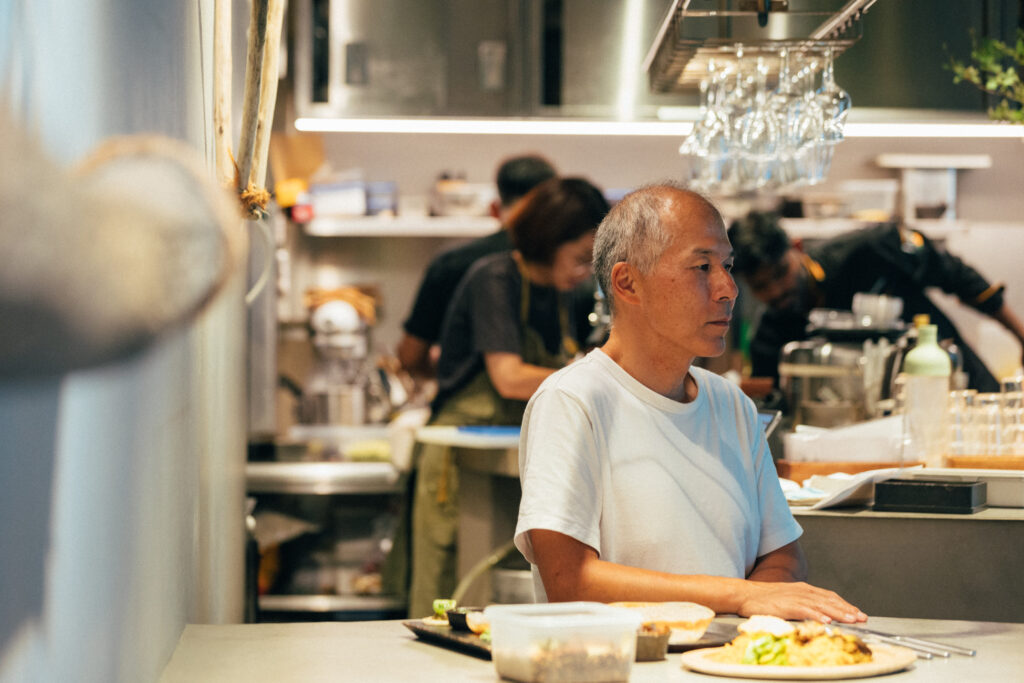
伊藤 一城
Kazushiro Ito
Born in Sumida-ku, Tokyo in 1970. After graduating from university, Ito worked in spatial design for four years before embarking on a three-and-a-half-year, round-the-world trip that took him to 48 countries. Among all the cuisines he encountered, he was particularly struck by South Indian cuisine, especially rasam, and decided to open his own restaurant. Upon returning to Japan, he gained experience in an Italian restaurant for one year, an Indian restaurant for two years, and a Sri Lankan restaurant for one year. In November 2003, he opened ‘Spice Cafe’ in the self-renovated wooden apartment building from 1960, owned by his parents. In 2022, ’Spice Cafe’ was listed in the Michelin Tokyo Bib Gourmand. In December of 2021, Ito opened his second business, the Sri Lankan restaurant ‘HOPPERS’, on the first floor of “KABUTO ONE” in Kabutocho, and it was also listed in the Michelin Tokyo Bib Gourmand in 2024.
Interview&Text : Misaki Yamashita
Photo : Naoto Date
